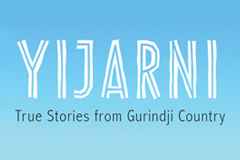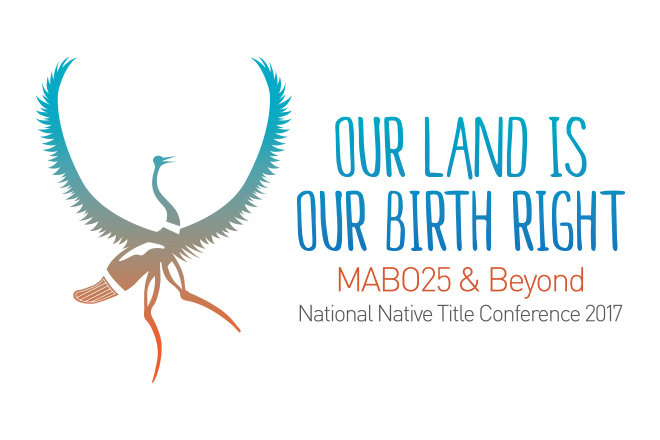Copyright issues for Indigenous stories
This excerpt from Who Owns Story by Terri Janke presented at Sydney Writers Festival 2010 is copyright, and reproduced with the kind permission of the author.
©Terri Janke, 2010
Downloadable version of Who Owns Story (PDF 75 KB)
Traditional cultural expression
Traditional Indigenous stories are the heart of Indigenous identity. They were traditionally told by word of mouth to pass on knowledge about ways of life including food collection and preparation, knowledge of healing plants and kinship patterns. Stories contained the vital information about knowing your place, knowing the world, and knowing how to survive. Some Indigenous stories are sacred. Stories are about belonging. They are the title deeds to a culture – clans have particular stories, and a story connects you to that place, or to those people. The right to tell stories and to link into that history, to that land, and that connection is an Indigenous cultural right. It is one that is fiercely guarded in post colonial societies – where native title rights require Aboriginal and Torres Strait Islander people to show a continuous connection to their land and seas. All we have left is our stories. And that too, is under threat when other people publish and circulate stories without consent, without attribution and where the authenticity of the story has been compromised.
Copyright
Copyright is a 300 year old concept. It originated in Europe, gathered strength in the UK with the enactment of the Statute of Anne. In Australia, under the Commonwealth Copyright Act 1968, copyright is a bundle of rights given to authors to control the use of their literary works. This includes the right to sell the work, to publish it, to put it on the internet, and the right to adapt it.
The rights I have mentioned are economic rights, but since 2000, moral rights have been added to the bundle. Moral rights give authors the inalienable rights of attribution, and the right of integrity to protect their works from derogatory treatment which harms their reputation. Copyright does not last forever, it lasts for 70 years after the death of the author. After this period, a literary work is in the public domain, where it can be freely copied and subjected to unlimited acts of derogatory treatment, and claims of false attribution.
Five points for copyright and its application to Indigenous stories:
- An Indigenous story is oral and does not meet the material form requirement of the Copyright Act. The general copyright law rule is that the person who writes down the story into material form owns the copyright in the expression of that story. For Indigenous stories then, there is no legal requirement to get the prior informed consent of a ‘story owner’ to write their story.
- The protection period for copyright is 70 years after the death of the author. If long ago created Indigenous stories did meet copyright requirements regardless of material form, their antiquity would place them outside of copyright and in the public domain, and open to free use.
- They do not protect sacred stories from being published. Under Indigenous customary laws, the unauthorised dissemination of sacred or secret knowledge to the uninitiated is a serious breach of cultural laws.
- Without copyright, there are no moral rights of attribution or integrity. And anyway, these vest with ‘‘authors” the material form creators. Indigenous communal moral rights are important rights for Indigenous communities but under current copyright law, Indigenous people do not have these rights.
- Copyright focuses on the rights of individuals, and does not recognise that stories are collectively owned by the family or community and held for the benefit of future generations.
Is it appropriate to treat Indigenous stories as being in the public domain?
These five points highlight the issue that Indigenous stories are in the ‘public domain’ from a general copyright law perspective – free for anyone to use. In light of cultural protocols, cultural laws, it is not appropriate that we treat Indigenous stories as being in the public domain. This will require authors to consider the copyright issues when writing down Indigenous stories, using contracts to assign or share copyright, or paying fees for sharing stories. Collaborative writing projects should also set out processes for consent, attribution and integrity. It requires adopting ethical practice and observation of protocols.
Conclusion
There are discussions in the World Intellectual Property Organisation (WIPO) for new laws to protect ‘traditional cultural expression’ and the Declaration on the rights of Indigenous people, assert the right of Indigenous people to ‘maintain, control, protect and develop’ their traditional cultural expression, and to develop their intellectual property over it. But even without new laws, there are ways authors can respect the ownership of Indigenous stories by creatively using the existing copyright system, by using contracts, negotiating the issues of authorship, attribution, integrity and sharing of royalties at the outset. Authors need to look beyond copyright to protocol and practice. Publishers can do the same, as the example with the Aboriginal Studies Press of the Australian Institute of Aboriginal and Torres Strait Islander Studies. Aboriginal Studies Press is breaking new ground in Indigenous publishing protocols, which incorporates Indigenous cultural and intellectual property principles into practice.




